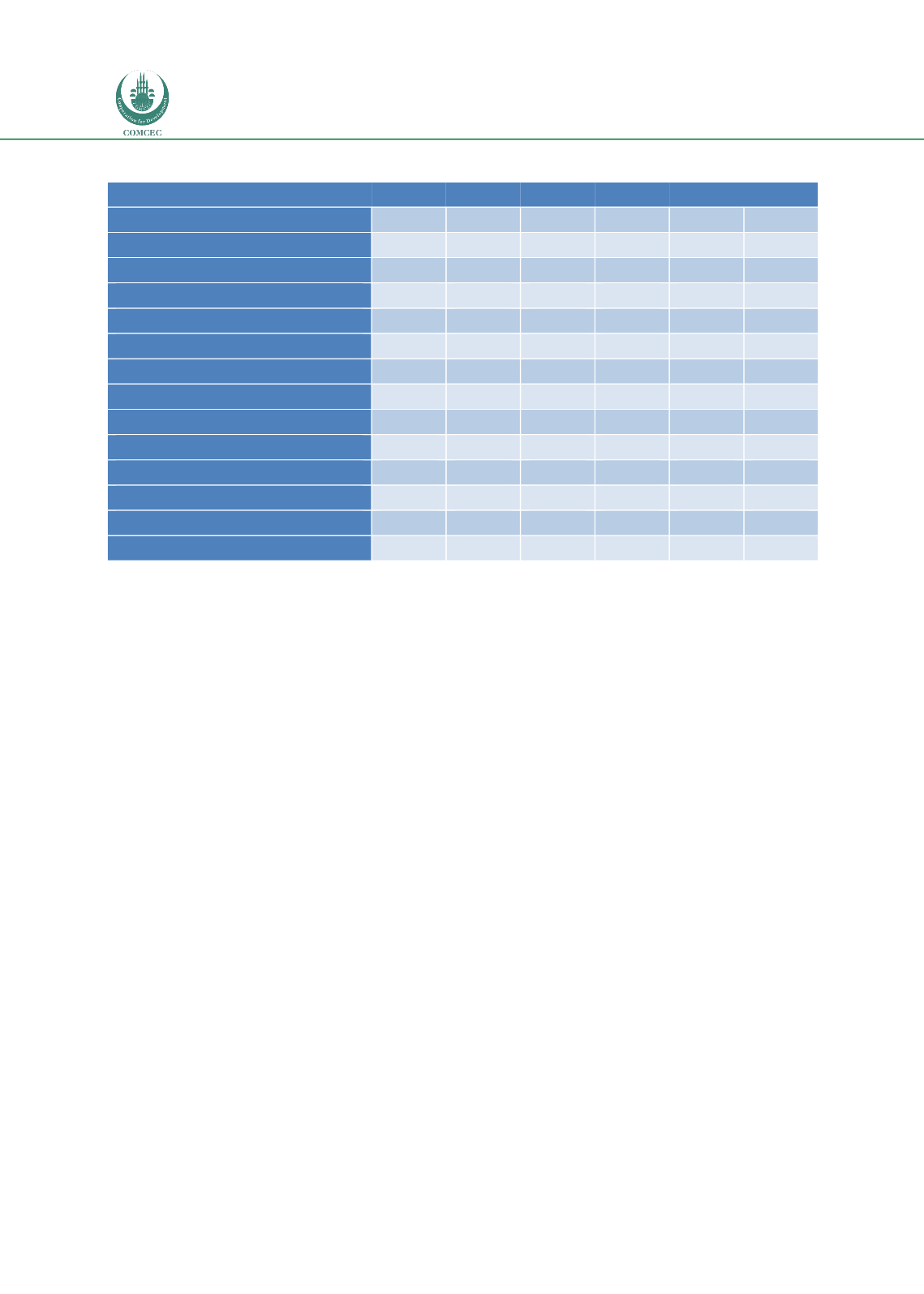

Reducing Postharvest Losses
In the OIC Member Countries
50
Table 16: World Fisheries and Aquaculture Production and Utilization
Production (Million tonnes)
2007
2008
2009
2010
2011
2012
Capture
Inland
10.1
10.3
10.5
11.3
11.1
11.6
Marine
80.7
79.9
79.6
77.8
8.26
79.7
Total capture
90.8
90.2
90.1
89.1
93.7
91.3
Aquaculture
Inland
29.9
32.4
34.3
36.8
38.7
41.9
Marine
20
20.5
21.4
22.3
23.3
24.7
Total Aquaculture
49.9
52.9
88.7
59.1
62
66.6
Total World Fisheries
140.7
143.1
145.8
148.2
155.7
157.9
Utilization
Human consumption
117.3
120.9
123.7
128.2
131.2
136.2
Non-food uses
23.4
22.2
22.1
20
24.5
21.7
Population (billions)
6.7
6.9
6.8
6.9
7
7.1
Per capital food fish supply (kg)
17.5
17.8
18.2
18.6
18.7
19.2
State of the World Fisheries, FAO, 2014
Fish and other aquatic products are produced, either through capture or through aquaculture.
Food production through capture has remained stable and is not expected to grow. However,
fish produced through aquaculture has grown rapidly over the last decades and will continue
to do so.
Postharvest Losses in Fish
Postharvest loss refers to the quantitative and qualitative reduction of produce occurring from
the time the fish is caught, through all stages of the supply chain that precede consumption.
The literature identifies four types of losses in the fish supply chain: physical, quality, market
force and nutritional (Cheke and Ward, 1998; Ward and Jeffries, 2000; Kumolu-Johnson and
Ndimele, 2011). These are generally defined as follows.
Physical losses
refer to the loss of fish that occurs because the produce is thrown away,
spoiled, or consumed by insects or animals during processing and storage. The loss can
happen at different stages, for example at the fishing stage due to discarding of unwanted
catch or bycatch (typically associated with shrimp trawling), or due to market mechanisms
(such as oversupply or lack of market). Physical loss is expressed both in terms of
decreases in weight and/or monetary value of the produce.
Quality losses
are expressed mostly in monetary terms as this represents the difference
between the potential values of fish at best quality and its current value after quality
degradation. Quality-deteriorated fish can be sold at a lower price as a downgraded
product in the same or in a different market for other purposes.
Market force losses
refer to different types of losses attributable to market behaviour or
management. These forces may lead to a decrease of the price below an optimum price or
a monetary loss because of high marketing and production costs. These losses are
considered pure market losses to distinguish them from the monetary losses due to
















